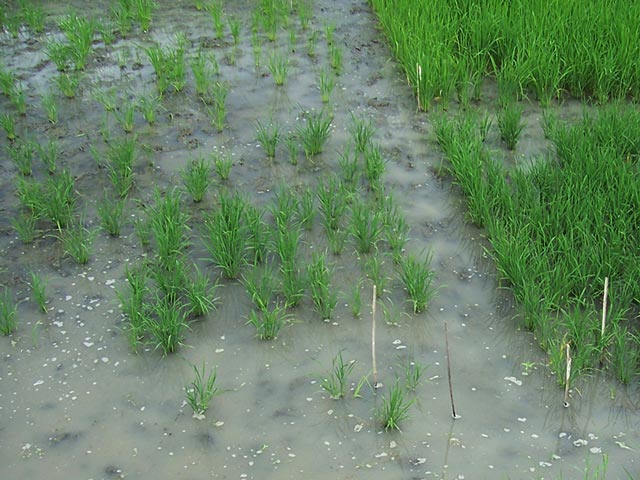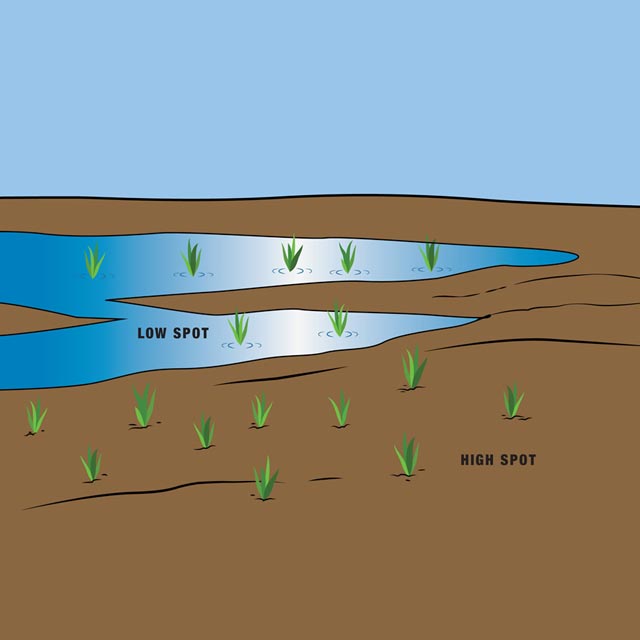Field level (high spots)
What it does
Seeds planted on high spots are more prone to weed competition, and may suffer in moisture stress.
Why and where it occurs
The problem occurs due to the unevenness of fields with the high spots lying above the water level. The problem tends to be more problematic in rainfed areas.
How to identify
Rice plants on high spots are often water stressed, resulting in:
- stunting
- rolling of leaves
- burning of leaf tips
- leaf drying or senescence
- delayed flowering
- possible whiteheads (with tillers attached to the stem)
The pattern of damage is usually in patches.
This field problem has similar symptoms to drought and Nitrogen deficiency. To confirm the cause of damage, check the field level.
Parts of the field are higher than the surrounding area and higher than the average elevation for the entire field. Raised areas often have more weeds.
Why is it important
High spots in the field can be economically significant. When fields are leveled, yields may be increased significantly by 10−50% or more.
How to manage
- Level the fields properly
- Maintain a flat even surface when plowing









